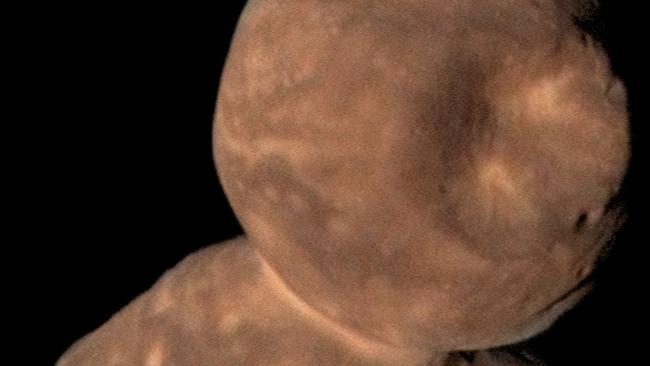Rock offers glimpse of Earth’s gentle start
Few rocks are more different from Earth than Arrokoth, but it may hold the secret to our planet’s formation.

Few rocks are more different from Earth than Arrokoth. A chilly and knobbly “planetesimal” far beyond the orbit of Neptune, its temperature rarely exceeds -216C.
Yet scientists believe that on Arrokoth’s strange, misshapen surface lies the secret to our planet’s formation — showing Earth and all other rocky planets were forged through a slow accretion of material rather than in violent collisions. The planetesimal, they believe, has resolved one of the big debates in planetary science. A year ago, a NASA probe passed by Arrokoth, travelling through the Kuiper Belt, beyond the orbit of Neptune. What it saw on this 35km-long rock, where gravity is a thousandth that of Earth’s, was a window to the early solar system.
“Basically, these bodies saw action only during and shortly after their formation phase,” said Orkan Umurhan, from NASA’s Ames Research Institute. “They are like a time capsule to that very early formation phase of the early solar system.”
There are two theories about planetary formation. One is “local cloud collapse”, where planetesimals formed from the gentle gravitational forces of nearby objects pulling together. Another is “hierarchical accretion”, where a chain reaction of larger and larger crisscrossing collisions joined matter together in a violent cataclysm.
Astronomers have analysed the data from Arrokoth, and concluded it was made by the first process. “It is without a doubt the best-preserved sample of planetesimal formation any spacecraft has ever visited,” said Alan Stern, who works with Dr Umurhan at NASA and is presenting his results at the annual meeting of the American Association for the Advancement of Science in Seattle. “This object has uniform colour and composition — which shows it is most likely from the same place. There is no evidence of violence or fractures in the collisions that brought it together. We see the two lobes gently perched on top of each other … It’s impossible to imagine Arrokoth being formed by classical hierarchal accretion.”
If it was formed this way, he said, the logical conclusion is that so too were the planetesimals that did grow up to become planets. “After decades of debate we finally find an object well enough preserved and primitive enough to test these models. The result is decisive,” he said.
The Times



To join the conversation, please log in. Don't have an account? Register
Join the conversation, you are commenting as Logout